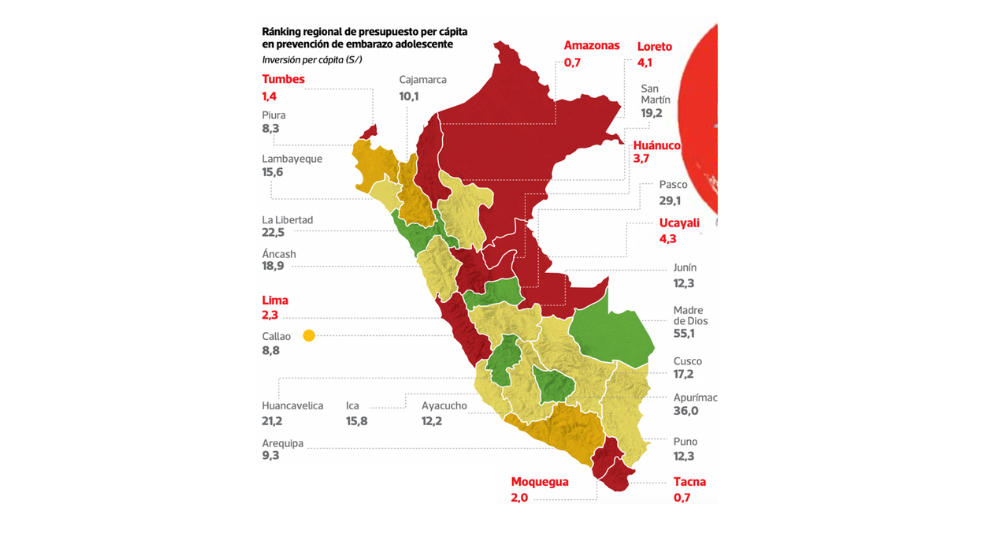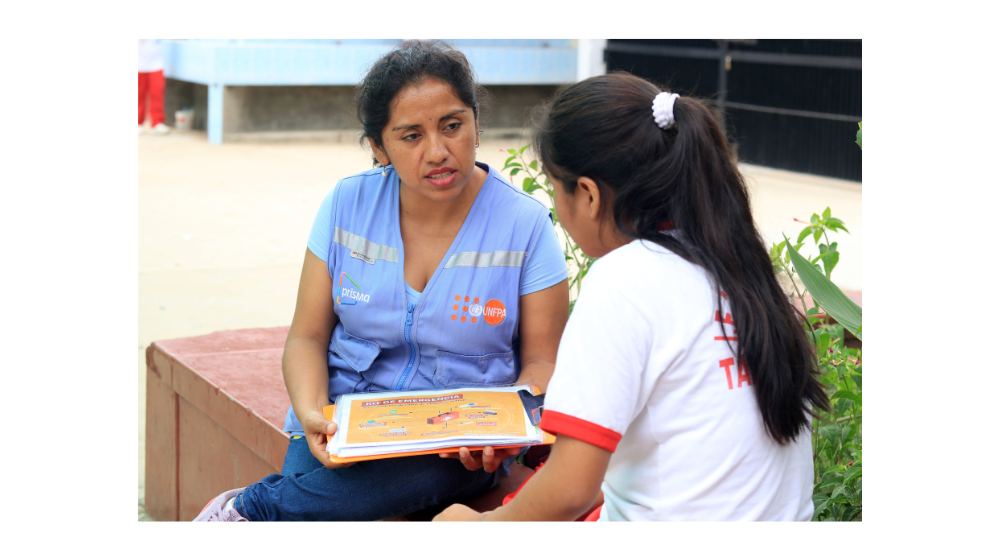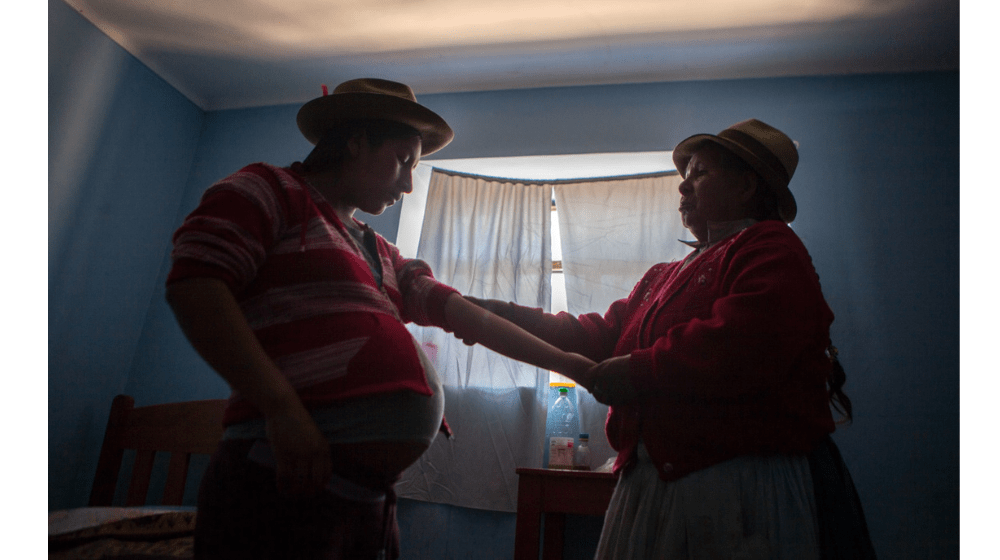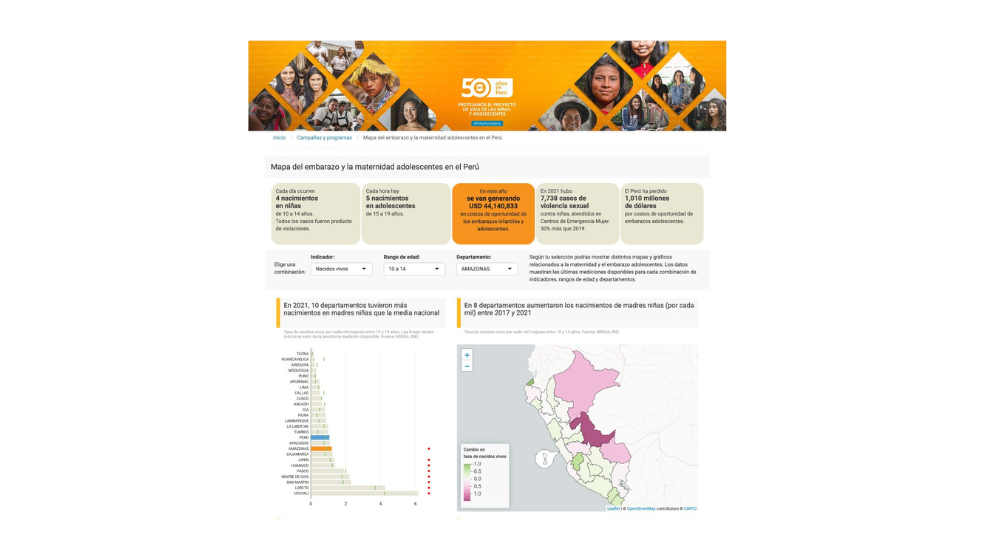Raising Awareness about Teenage Pregnancies and Motherhood is Crucial for Building a Better Future for Girls and Adolescents in Peru
Teenage pregnancy and early motherhood are the result of a range of generational, socioeconomic, territorial, and other inequalities, at the core of which lies gender inequality. This is manifested in episodes of violence and sexual abuse, hegemonic control over one's body, and restrictions on the right to age-appropriate, quality sexual and reproductive education and information for girls and adolescents. It also affects their sexual and reproductive health, leading to unintended motherhood.
The consequences of early motherhood are long-lasting and can be definitive. They begin with school dropout and lead to difficulties in accessing decent employment, resulting in conditions of exclusion and poverty that can be passed down to future generations. Additionally, the complications associated with pregnancy and childbirth, including unsafe abortions and limited access to emergency medical care, can result in death, disability, or physical and mental health deterioration, particularly when the pregnancy originates from sexual abuse.
The publication on the Map of Teenage Pregnancy and Motherhood in Peru reveals unfortunate nuances and trends. The increase in motherhood among girls aged 10 to 14 goes hand in hand with a rise in reports of sexual violence, although we know that these reports do not represent the entirety of sexual violence against girls, and not all instances of sexual abuse lead to motherhood. Despite efforts to protect girls from abuse and unwanted pregnancies, we continue to grapple with the detrimental issue of child marriage.
Building on this publication, UNFPA in Peru has developed a digital dashboard that analyzes and compares the situation of teenage pregnancy and motherhood at the national and departmental levels. It also emphasizes the role of socioeconomic, racial, and gender-related factors in the unequal patterns of child pregnancy and sexual abuse. The dashboard includes infographics by region and at the national level.
In Peru, every year, more than 1,500 girls aged 10 to 14 become mothers (1,611 in 2022). An analysis of the regional budgets for teenage pregnancy prevention carried out by EC Data shows that, on average, regions allocate a budget of S/9.3 per adolescent, even though the ideal minimum should be S/55.

The study highlights that teenage pregnancy has negative consequences for both adolescents and their children, including increased risks of maternal and infant mortality, as well as greater challenges in terms of accessing healthcare and education services. It underscores the need to address the issue of teenage pregnancy through policies and programs that promote comprehensive sexual education, gender equality, and access to quality healthcare services.

In addition to the aforementioned consequences, the economic cost of teenage pregnancy and motherhood can be significant in terms of its opportunity cost reflected in the benefits that society foregoes. In the year 2022, the economic cost arising from pregnancies and births that occurred in the previous year will be approximately US$ 66.7 million in Peru. This cost will repeat every year in the productive life of the cohort of girls and adolescents of that year, adding to the costs of past and future cohorts. If we project an estimate from 2021 to the year 2030, the accumulated economic cost of teenage pregnancy and motherhood would amount to no less than US$ 3,135 million.
5 key facts:
- The jungle and highland regions have the highest teenage fertility rates, while coastal regions have lower rates.
- A little over 70% of pregnancies in adolescents aged 15 to 19 are unplanned.
- Cases of sexual violence against girls aged 10 to 14 treated at Centros de Emergencia Mujer (CEMs) tripled between 2017 and 2022, with a higher proportion of increase between 2020 and 2021.
- It is urgent to eliminate the practice of child marriage from the national legal framework, thereby preventing sexual offenders of minors under 14 from changing from perpetrators to spouses and avoiding the corresponding penalties under the current penal code.
Key Resources:
- Check the digital dashboard with figures, data, and key messages on teenage pregnancy and motherhood.
- Infographic with national data (infographics by region).



